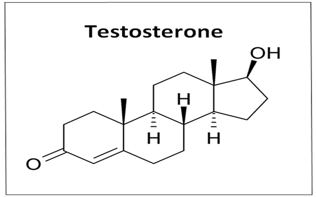Steroids

Image 1: This a picture of a baseball player, Tayler Hooton, before he committed suicide on July 15th, 2003 (Tyler Hooton.org, 2011)
Taylor Hooton was a well-known and well liked student at Plano West Senior High School. According to the Taylor Hooton Foundation, Taylor was mostly known for his talents in baseball, and Taylor was shaping up to be a prospect to make it to the next level (1). Taylor performed very well during his senior season, but during the summer of 2003 Taylor committed suicide by hanging himself. The doctors on the case stated that “Taylors death was related to depression that he felt upon discontinuing the use of anabolic steroids” (1). The doctors noted that steroids can cause “lethargy, loss of confidence, melancholy and hopelessness” when people stop using them after a period of time(1). The use of steroids is common practice for professional athletes. However, in Tayler’s case, he was only in high school and thus was too underdeveloped to deal with the effects of them (1).
Definition of the term and History
According to leading research, anabolic steroids are a substitute for the male hormone known as testosterone. Testosterone has strengthening and growth effects on the human body, specifically on human muscles, and it also increases sex drive. By using anabolic steroids, one can increase their muscle mass and improve their athletic performance (2). To accurately gauge how much the human body changed under the influence of anabolic steroids, researchers ran tests on people during the 1980’s and calculated 5-20% gains in strength and 2-5kg of lean body mass (2). In the image below you can see how similar the chemical structures are and how they could have similar physiological effects.


Image 2: This is a picture of the chemical structures of testosterone and an anabolic steroid. Both molecules consist of cyclohexanes with alcohol and methyl groups coming off; The only difference between the two structures is the anabolic steroid has an extra methyl group along with one other alkene which pure testosterone does not have, which suggests more reactivity. (4)
The earliest traces of anabolic steroids date back to the 1940’s during WWII when they were given to German soldiers to enhance their strength and aggressiveness (3). In terms of athletics, the first recorded use of steroids happened in Russia during the early 1950’s (3). In the following years, steroid use had spread to United States and they were being used by male and female athletes all over the country (3). “At first they were used almost exclusively by weight lifters and heavy throwers; their use later spread to football players, swimmers, and other track and field participants” (3). The fight against anabolic steroids was started in the 1960’s by the International Olympic committee (2). In the attempt to control steroids, the IOC issued out steroid tests during the 1968 Olympic games in Mexico, and they also placed steroids on the list of banned substances in the late 1970’s (2). During the 1980s, the IOC implemented the “out of competition” rule for all athletes (2).
Perspectives and Controversies
The main controversies surrounding steroids is when they are used by athletes and the effect it has on their performance. According to researchers, “many athletes having personal experience with these steroids insist that their performance is improved” (3). Most people refer to steroids as performance enhancing drugs when it comes to cases dealing with athletes (3). Much of the scientific community doubt that steroids have an actual effect on athletes, claiming that they show no actual improvement. Another area of controversies stems from scientific claims that steroids do more harm than good (3). Some of the more serious adverse effects of steroids include problems with the cardiovascular system, dangerous blood pressure levels, depressive states, and loss of hair (3). The general consensus of athletes who are currently using steroids is that the adverse effects of steroids “are not serious or permanent” (3). However, the research conducted by these scientific communities show that “chronic” users of steroids can suffer from “abnormal liver function, changes in the reproductive system, peliosis hepatis, and liver tumors” (3). Even in light of all of these effects of anabolic steroids “many case reports indicate that a substantial number of athletes will not be deterred by the adverse effects and will accept the risks of health damage” (3).
Connection to MHS
According to Jonathan Donahay, many people in today’s society “share the common assumption that health is intimately connected to, and ultimately defined by, a person’s appearance” (5). Social norms today promote the idea that a person of good health looks like someone who is toned and has plenty of muscles. Mentzel makes on a comment on an issue of Men’s Health that he had recently read and says that “it subdivides health into the categories of Sex, Fitness, and Nutrition and instructs readers on ways to obtain buns of steel or build razor sharp abs…” (5). Unfortunately, the perception of health depicted in these magazines makes men turn towards using steroids to obtain the “healthy” image that they want. Anabolic steroids are even more appealing to male athletes because not only do they enhance their figure, but they also rumored improve their sexual and athletic performance. The use of steroids by male athletes also points to the issue topic of medicalization. Men will point to their lack of athletic ability as a type of “disorder” and turn to steroids to help fix/treat their problem (6).
Works Cited:
- “Taylor Hooton.” Taylor Hooton, Taylor Hooton Foundation, 17 Jan. 2012, taylorhooton.org/taylor-hooton
- Evans, Nick. “The American Journal of Sports Medicine.” Sage Journals, 1 Mar. 2011, journals.sagepub.com/doi/abs
- Hartgens, Fred, and Harm Kuipers. “Effects of Androgenic-Anabolic Steroids in Athletes.”SpringerLink, Springer International Publishing, 23 Sept. 2012, link.springer.com/article
- Fahey, Thomas. “Mechanism of Action and Effects on Performance.” Encyclopedia of Sports and Medicine, www.sportsci.org/encyc/anabster/anabster.html.
- Metzl, Jonathan M. Why Against Health. brightspace.vanderbilt.edu/d2l/le/content/58401/viewContent/606120/View.
- Conrad, Peter. “The Shifting Engines of Medicalization.” Journal of Health and Social Behavior, vol. 46, no. 1, 2005, pp. 3–14.
« Back to Glossary Index
